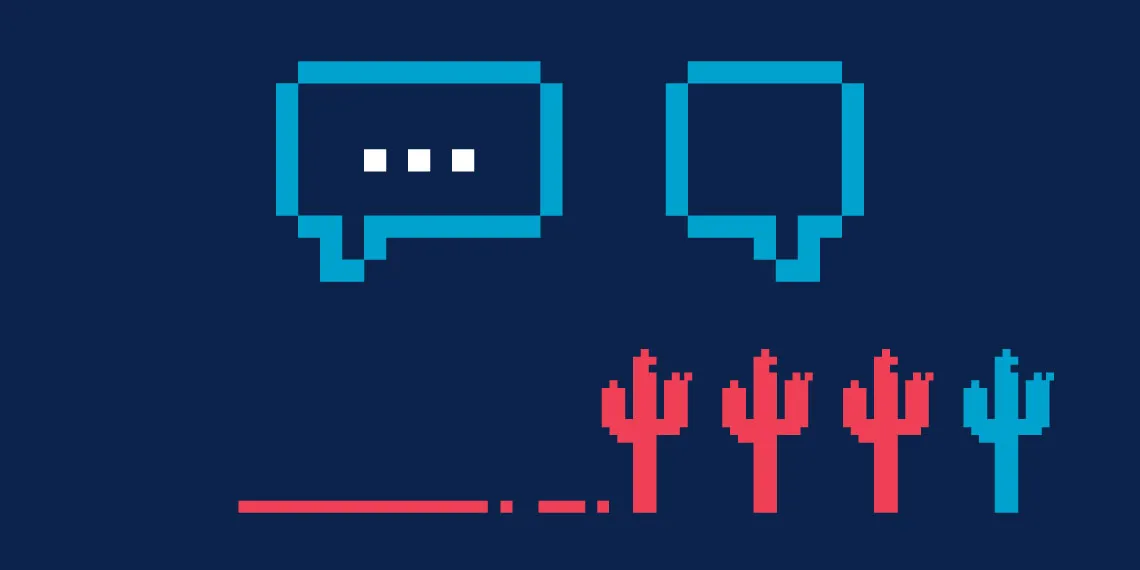Gamifying learner-to-learner interaction for an engaging learning experience
Engagement is an important factor of a successful online course design. As an instructor you might want to make sure that your course design promotes engagement through the following interactions.

Learner-to-Learner Interaction
Among all these types of interactions, promoting an active learner-to-learner interaction can be challenging. The aim of learner-to-learner interaction is to create a dynamic of teaching and learning that enhances active participation and provides learners with opportunities to interact with one another in various ways1. In this context, QM encourages you to promote collaborative activities that enhance active learning through “group discussions; small-group projects; group-problem solving assignments; or peer critiques”2. If you are already applying these to your course design – That’s absolutely great!
However, there is still room for improvement, as learner-learner interaction should be seen as a continuum involving Communication, Collaboration, Cooperation, and Community3.
- Learner-to-learner interaction four-stage continuum:
- Communication: People ‘talking,’ discussion
- Collaboration: People sharing ideas and working together (occasionally sharing resources) in a loose environment
- Cooperation: People doing things together, but each with his or her own purpose
- Community: People striving for a common purpose4
Therefore, we might want to put it like this: How can we create a dynamic/synergy of learner-to-learner interaction in our online course design that enhances opportunities for communication, collaboration, cooperation, and community?
A potential response can lie in the gamification of learner-to-learner interaction. Gamification refers to the “use of game design elements in non-game contexts”5. Gamifying learner-to-learner interaction is the application of game design elements and principles in the conceptualization and the definition of learner-to-learner interaction in a course design – it doesn’t imply the use of games at all!
What is Gamification?
Game design principles offer several affordances that you might want to consider when designing your online course. In practice, you can leverage the potential of learner-to-learner interactions in your activities by applying game design elements such as:
- Reward
- Play
- Competition
- Achievement
One of the immediate affordances of gamification can be the sense of community and cooperation; gamification is a means for socialization, especially in collaborative game-like environments. The idea is to create a learning environment that applies the principles of game design which fosters learner-to-learner interaction – focusing on the application of game design principles, not on the use of games in your course design as part of your learning activities.
The model suggested here is as simple as you might be thinking. It simply implies that integrating or considering some game design principles can bring a new dynamic in the way your learners interact with one another and offer many opportunities for communication, collaboration, cooperation, and community-based learning environments.
Practical tips
For instance, a discussion post activity that uses Padlet to “reply to your peers’ posts in response to a reading” would involve only communication. A simple way to bring it to the community level of the continuum in a dynamic way is gamification. You may gather learners into small groups in which each group member works together to come up with group takeaways that they can compare, contrast, and share with other groups' ideas – collaboration. Students within their respective groups complete individual tasks as they contribute to the group's progress – cooperation. This will lead to a level of community participation. It might help if you grant some points in the grading rubric as a way of rewarding learners' achievement. Instead of competing against each other, you might want them to compete against their previous performance or time of completion to be able to earn the point assigned. By including the notion of reward, play, and competition, you create a sense of achievement in your learners and a sense of belonging.
This is the place where gamifying this discussion activity will simply reinforce, strengthen and foster the continuum of communication, collaboration, cooperation, and community, allowing students to interact and engage in a meaningful way with the course content and their peers.
References
1 Stone, C. (2021). Improving Student Engagement, Retention and Success in Online Learning. In Student Retention and Success in Higher Education (pp. 167-189). Palgrave Macmillan, Cham.
2 Higher Ed. Rubric Workbook, Sixth Edition, (2018)
3Siemens, G. (2002). Interaction. E-Learning Course. October 8, 2002.
4 Brindley, J., Blaschke, L. & Walti, C. (2009). Creating Effective Collaborative Learning Groups in an Online Environment. International Review of Research in Open and Distributed Learning, 10(3). https://doi.org/10.19173/irrodl.v10i3.675
5 Deterding, S., et al., (2011), From Game Design Elements to Gamefulness: Defining “Gamification” . MindTrek’11, September 28-30, 2011, Tampere, Finland. Copyright 2011 ACM 978-1-4503-0816-8/11/09


